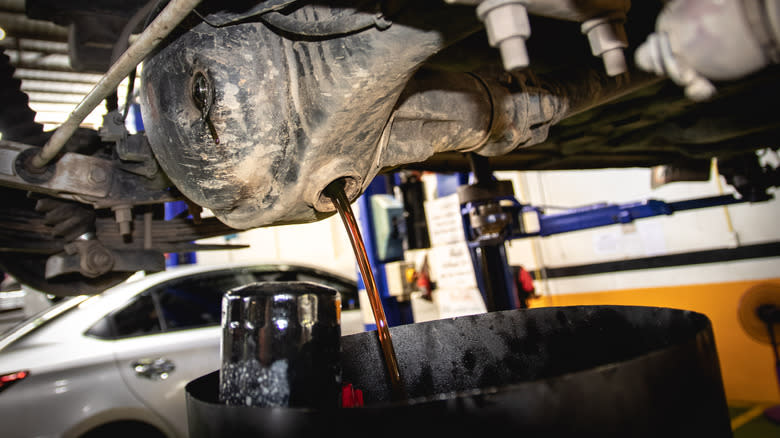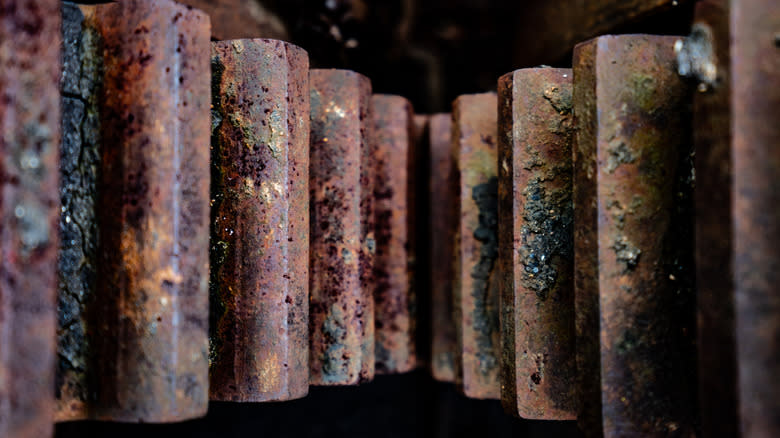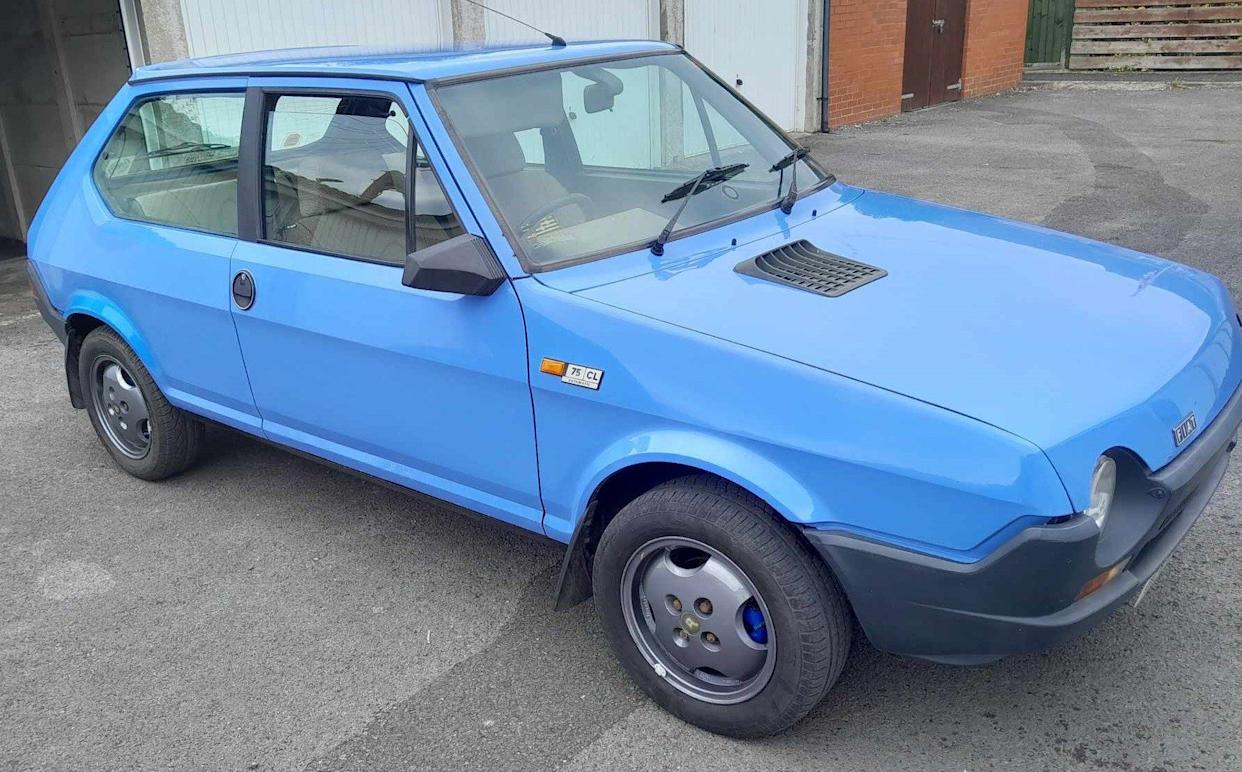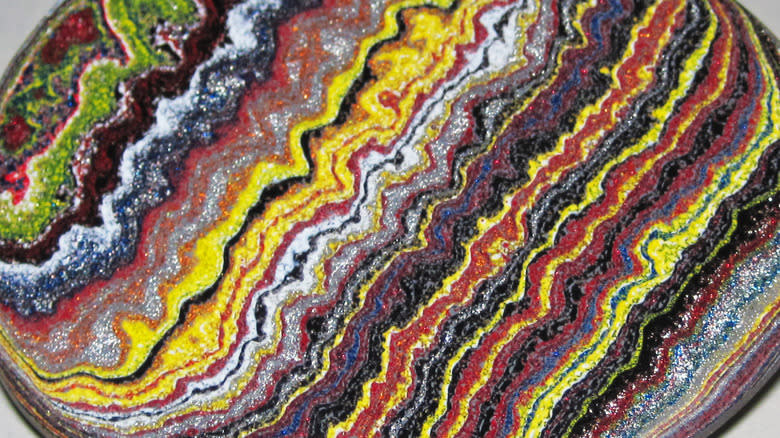
Let's be honest, the average person has never thought about whether differentials even have fluid. They're not like engines, which require oil changes after about 5,000 to 10,000 miles (or 12,500 if you have pockets deep enough to keep a Mercedes 450SEL 6.9 going). No, differentials are much less demanding. The soonest you'll likely have to change diff fluid is around 30,000 miles, though some of the lead-footed among us might do it every 20,000, just to be safe. Depending on your driving style, how much your gas pedal makes contact with the floorboard, and the manufacturer's service interval recommendations, you might be able to get away with 50,000 to 60,000 miles. You'll even find sources that say you can go up to 100,000 miles before changing your diff fluid, and beyond!
As an example of how much usage can impact how often you have to drain and refill the differential, Ford recommends a 150,000-mile service interval for F-150s. That is, unless you do enjoy copious towing in temps above 70 degrees with lots of throttle, in which case the interval plummets to just 30,000 miles.
If these service requirements come as a shock to you, you're not alone. Car companies have been slowly conditioning us to expect our cars to just plain work, thanks to long fluid change intervals, and have even started using phrases such as "sealed for life." But, just as you don't want to drive 200,000 miles with the same transmission fluid, your differential does deserve some attention.
Read more: These Are Lesser-Known Automotive YouTubers Our Readers Say Deserve More Attention
Your Differential, A Well-Oiled Machine
If you're having trouble picturing the inner workings of a differential, start your education with this classic 1937 differential explainer film by Jim Handy. Even in its simplest form, you can see that there will be plenty of gears taking lots of torque and spinning at high speeds. If the gears don't have a thin layer of lubricant, they'll just start grinding each other apart.
That's why some differentials have magnets in the case. Instead of letting metal shavings float around and wear down the gears even more, the magnet sucks them out of the fluid. But magnets aren't magic. If you don't get the fluid changed within reasonable mileage limits, the oil will still get old and dark, and eventually become thicker and less effective. Differentials get hot, too, with temperatures that can get up to 260 degrees Fahrenheit or more during break-in periods. Too much heat will cause the oil to break down faster, ruining its ability to lubricate the gears.
A whine or whir that changes depending on speed and gearing will tell you that you're starting to get metal contacting metal. Strange vibrations through the car can also be a sign that there's not enough lubrication. If you want to be sure that it's just a matter of changing the fluid because it's been a while, check the color and consistency. Your diff fluid should be clear and yellow or green. But if it's turning a dark olive, brown, or even black, then the fluid has oxidised or is contaminated. Let it go for too long, and you'll start noticing vibrations, uneven tire wear, and burning smells.
Get Your Hands Dirty — Change That Differential Fluid Yourself

Changing differential lubricant isn't that tough; just be sure to buy the right oil for your diff. First, chock the wheels, jack up your car, and rest it on stands. Put on some latex or nitrile gloves, because this will get messy. Locate the differential's drain plug and place your drain pan underneath. Check your owner's manual to see how much oil can fit in the diff, which is generally around three quarts. Loosen the plug with the appropriately sized socket and let the oil drain completely. Make sure you wipe the oil from the threads before you replace the drain plug. On top of the diff, you'll see the filler plug, which will likely take the same size socket. Unless you drop the diff, you're likely going to need a pump to get the fluid in. Once it's full, wipe the excess with some shop cloths and tighten the filler plug.
If you want a more thorough cleaning, you can remove the diff cover to drain the oil and clean the innards. That is a whole other level of complexity, however. You'll need to keep track of which bolts go in which holes, remove the old gasket, clean the gasket mating surfaces without compromising or gouging them, and possibly remove other parts, such as the sway bar, to access the diff cover. But, if you're a reader of this site, you're nothing if not adventurous. Changing your engine oil was likely your DIY gateway drug, but if you haven't done that yet, buck the trend by tackling your differential first.
Want more like this? Join the Jalopnik newsletter to get the latest auto news sent straight to your inbox...
Read the original article on Jalopnik.








Comments